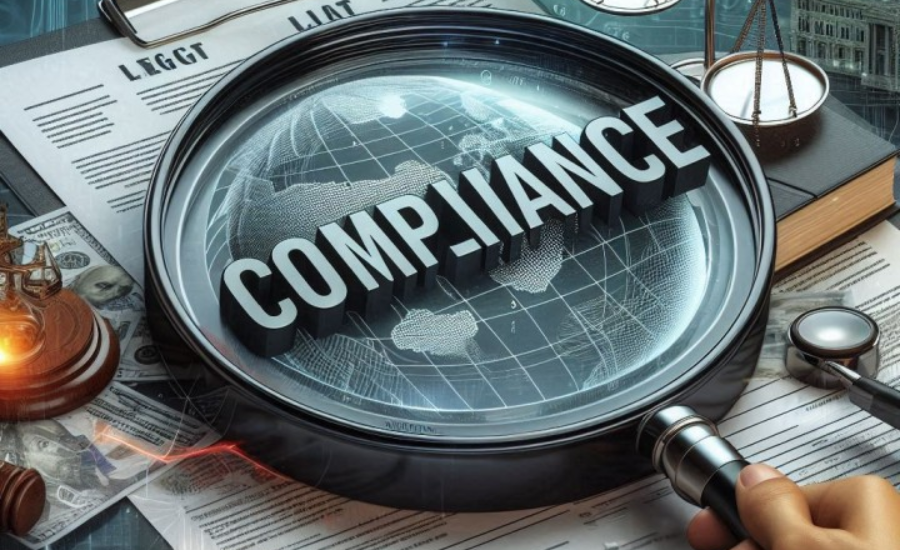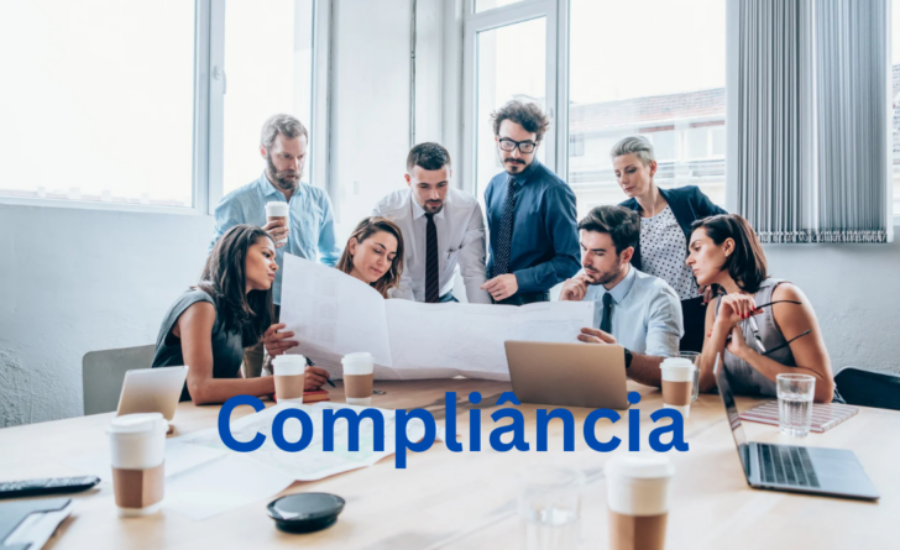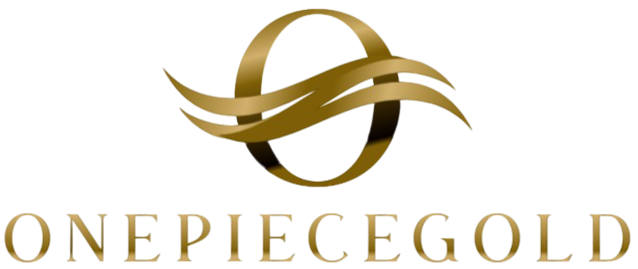BLOG
Compliância: Navigating the Complex Landscape of Business Regulations

In the dynamic and competitive global marketplace, the concept of compliance, often referred to as “Compliância,” has emerged as a fundamental pillar for organizations across various sectors. Compliance encompasses the adherence to a broad spectrum of laws, regulations, and ethical standards that guide an organization’s operational framework. It is a multifaceted domain, influencing several critical areas such as financial practices, data protection, labor standards, environmental regulations, and corporate governance.
The importance of establishing Compliância measures cannot be overstated. These processes not only help organizations navigate the complex legal landscape but also enable them to avert legal ramifications, financial repercussions, and reputational harm. Furthermore, fostering a culture of compliance ingrains integrity and transparency within the organization, thereby enhancing stakeholder trust and promoting overall organizational performance.
This comprehensive guide will explore the fundamental principles of compliance, its significance across different sectors, the challenges organizations face in maintaining compliance, and the emerging trends shaping the future of this essential business aspect.
Understanding Compliância: A Multifaceted Approach

Definition of Compliancia
Compliance can be defined as the process by which organizations adhere to laws, regulations, guidelines, and specifications relevant to their operations. This adherence is crucial for fostering a secure and ethical business environment. It requires a thorough understanding of the legal landscape and a commitment to ethical conduct, necessitating that organizations stay informed about applicable regulations and best practices.
The Components of Compliance
Compliance comprises several key components that ensure organizations operate within the legal framework:
- Legal Requirements: Organizations must comply with a myriad of laws and regulations that govern their industry. These include federal, state, and local laws, as well as international regulations when applicable.
- Ethical Standards: Beyond mere legal adherence, compliance also involves upholding ethical standards. Companies are expected to operate with integrity and transparency, fostering a culture of accountability.
- Internal Policies: Organizations must develop internal policies that align with external regulations and ethical standards. These policies serve as guidelines for employees and help maintain consistency in operations.
- Training and Education: Continuous training and education are vital for ensuring that employees are aware of their compliance responsibilities. This proactive strategy helps minimize the risk of accidental violations.
- Monitoring and Auditing: Regular monitoring and auditing of compliance activities are essential for identifying potential issues before they escalate. These processes allow organizations to assess the effectiveness of their compliance programs and make necessary adjustments.
The Importance of Compliance

1. Legal and Regulatory Requirements
Legal compliance is the backbone of any effective compliance program. Organizations must adhere to various industry-specific regulations to avoid severe consequences, including hefty fines, legal sanctions, and reputational damage. For instance, financial institutions are obligated to comply with stringent anti-money laundering (AML) laws, while healthcare providers must protect patient privacy under regulations like the Health Insurance Portability and Accountability Act (HIPAA) in the United States. Non-compliance with these regulations can result in serious consequences. For example, the financial sector has witnessed numerous penalties due to non-compliance with AML regulations, resulting in not only financial losses but also damage to their credibility and trustworthiness. Healthcare providers, on the other hand, face not only financial penalties but also a loss of patient trust, which can have dire consequences for their practice.
2. Risk Mitigation
Risk management is another vital aspect of compliance. An effective compliance framework helps organizations identify and manage potential legal and financial risks associated with non-compliance. By implementing comprehensive compliance programs, organizations can mitigate these risks and ensure business continuity.
Compliance helps organizations safeguard their assets and market position by minimizing vulnerabilities. For example, a robust compliance program can prevent data breaches that could expose sensitive customer information, thereby protecting both the organization’s reputation and financial standing. Moreover, a well-structured compliance program can enhance operational efficiency by streamlining processes and reducing the likelihood of errors that could lead to non-compliance.
3. Ethical Standards and Corporate Governance
Compliance goes beyond mere legal obligations; it also encompasses ethical standards and sound corporate governance. Organizations that prioritize ethical behavior and transparency are more likely to earn the trust of stakeholders, including customers, investors, and employees. This trust can lead to increased customer loyalty, higher employee morale, and improved investor confidence.
Companies known for their ethical practices tend to attract more loyal customers and employees, who are often more engaged and motivated. In contrast, organizations that neglect ethical considerations risk damaging their reputation, leading to higher employee turnover and customer attrition.
4. Reputation and Brand Image
A strong compliance program can significantly enhance an organization’s reputation and brand image. Companies recognized for their ethical practices and regulatory adherence are more likely to attract customers and business partners. Conversely, organizations that fail to comply with regulations may suffer reputational damage, which can lead to a loss of business and diminished market value.
In today’s interconnected world, where information spreads rapidly, a single incident of non-compliance can lead to widespread negative publicity. Organizations must recognize that their reputation is a valuable asset that can be easily tarnished. Therefore, investing in compliance is not only a legal necessity but also a strategic move to protect and enhance brand reputation.
Building an Effective Compliance Program

A well-designed compliance program is critical for any organization aiming to navigate the complexities of regulatory requirements effectively. Key components of an effective compliance program include:
Policies and Procedures
The foundation of a successful compliance program is built on clearly defined policies and procedures. These documents should outline the organization’s commitment to compliance and provide guidelines for adhering to relevant laws, regulations, and ethical standards. It is essential that these policies be regularly reviewed and updated to reflect changes in regulations and industry best practices.
A comprehensive compliance policy should encompass all relevant areas of the organization’s operations, including financial reporting, data protection, employee conduct, and environmental regulations. It should also outline the consequences of non-compliance, ensuring that employees understand the importance of adherence.
Training and Awareness
Training and awareness initiatives are vital for ensuring that employees comprehend their compliance responsibilities. Organizations should conduct regular training sessions to keep employees informed about new regulations, ethical practices, and the implications of non-compliance. This proactive approach helps create a culture of compliance within the organization.
Moreover, providing employees with resources and support can empower them to take ownership of compliance efforts. Organizations should encourage employees to ask questions and seek clarification regarding compliance matters, fostering an environment of open communication.
Monitoring and Auditing
Continuous monitoring and auditing of compliance activities are essential for identifying potential issues before they escalate. Organizations should implement regular audits to assess the effectiveness of their compliance programs and make necessary adjustments.
Audits can take various forms, including internal assessments, external reviews, and compliance testing. These evaluations help organizations identify weaknesses in their compliance programs and provide opportunities for improvement.
Reporting Mechanisms and Open Communication
An effective compliance program must include mechanisms for reporting compliance concerns and violations. Organizations should establish clear communication channels that allow employees to report issues without fear of retaliation. This openness fosters a culture of accountability and encourages employees to take an active role in compliance efforts.
Regular communication about compliance initiatives and successes is also essential. Keeping stakeholders informed about the organization’s commitment to compliance reinforces the importance of adherence and builds trust among employees and external partners.
Enforcement and Accountability
To maintain the integrity of a Compliância program, organizations must enforce compliance policies consistently. Disciplinary measures should be applied fairly and transparently to address non-compliance and prevent future violations.
Establishing a culture of accountability requires that leaders set a strong example by adhering to compliance policies themselves. When employees see their leaders prioritizing compliance, they are more likely to follow suit. Organizations should also recognize and reward employees who demonstrate a commitment to compliance, reinforcing positive behavior.
Compliance Across Key Sectors
Compliância requirements vary significantly across different industries, each facing unique challenges and regulations. Below, we examine compliance in several key sectors:
Financial Services
The financial services industry is heavily regulated, with Compliância requirements focusing on areas such as anti-money laundering (AML), know your customer (KYC) regulations, and data protection. Financial institutions must implement rigorous Compliância programs to prevent financial crimes and protect customer information.
Regulatory bodies, such as the Financial Crimes Enforcement Network (FinCEN) in the U.S. and the Financial Conduct Authority (FCA) in the U.K., impose strict standards that financial institutions must follow. Failure to comply can result in severe penalties and damage to reputation.
Healthcare
Compliância in the healthcare sector involves adhering to regulations related to patient privacy, data security, and healthcare delivery standards. Healthcare providers must comply with laws such as HIPAA in the United States and the General Data Protection Regulation (GDPR) in the European Union to protect patient information and ensure quality care.
The healthcare industry faces unique challenges in Compliância due to the sensitive nature of patient data. Organizations must balance the need for data access with stringent privacy protections to maintain compliance and uphold patient trust.
Manufacturing
In the manufacturing industry, Compliância encompasses regulations related to product safety, environmental protection, and labor laws. Manufacturers must adhere to standards such as the International Organization for Standardization (ISO) certifications to ensure product quality and safety.
Additionally, manufacturers face increasing pressure to demonstrate compliance with environmental regulations aimed at minimizing their ecological footprint. This includes adhering to regulations concerning emissions, waste disposal, and resource conservation.
Information Technology
The IT sector faces Compliância challenges related to data protection, cybersecurity, and intellectual property rights. Organizations must implement measures to safeguard sensitive data and comply with regulations like the GDPR and the California Consumer Privacy Act (CCPA).
With the rapid advancement of technology, IT organizations must remain vigilant against cyber threats while ensuring compliance with evolving data privacy regulations. This requires a proactive approach to security and compliance, including regular audits and employee training.
Environmental Compliance
Environmental Compliância involves adhering to regulations aimed at protecting the environment and promoting sustainable practices. Organizations must comply with laws related to emissions, waste management, and resource conservation to minimize their environmental impact.
As public awareness of environmental issues grows, organizations are under increasing scrutiny to demonstrate their commitment to sustainability. Compliância in this area not only helps organizations avoid legal penalties but also enhances their reputation as responsible corporate citizens.
Challenges in Maintaining Compliance
Despite the importance of Compliância, organizations often face numerous challenges in maintaining adherence to regulations and ethical standards. Some of the most common challenges include:
1. Evolving Regulations
Regulations are constantly evolving, making it challenging for organizations to stay informed and compliant. Frequent changes in laws and regulations can create confusion and increase the risk of unintentional violations. Organizations must establish mechanisms to monitor regulatory changes and adapt their compliance programs accordingly.
2. Resource Constraints
Limited resources can hinder organizations’ ability to implement and maintain effective compliance programs. Smaller organizations, in particular, may struggle to allocate sufficient time and budget to compliance efforts. This can lead to gaps in compliance activities and increase the risk of violations.
Organizations must prioritize compliance as a critical business function and allocate resources accordingly. Investing in compliance technology and hiring dedicated compliance personnel can enhance the effectiveness of compliance programs.
3. Employee Engagement
Achieving employee buy-in is essential for the success of compliance initiatives. Organizations may face resistance from employees who view compliance as an additional burden rather than an integral part of their role. Ensuring that employees understand the importance of compliance and its relevance to their work is crucial.
Effective training programs and open communication can help engage employees and foster a culture of compliance. Organizations should highlight the benefits of compliance, such as increased efficiency and enhanced reputation, to motivate employees to actively participate.
4. Technology and Data Management
In the digital age, managing compliance-related data can be overwhelming. Organizations must navigate the complexities of data protection regulations while ensuring that they have robust systems in place to manage and protect sensitive information.
Investing in compliance technology, such as data management tools and compliance monitoring software, can streamline compliance efforts and reduce the risk of data breaches. Organizations must also establish clear data management policies to protect sensitive information and maintain compliance.
The Future of Compliance
As the business landscape continues to evolve, several emerging trends are shaping the future of compliance:
1. Technology Integration
The integration of technology into compliance efforts is becoming increasingly important. Organizations are leveraging advanced tools, such as artificial intelligence (AI) and machine learning, to automate compliance processes, monitor regulatory changes, and identify potential risks.
Technology can enhance the efficiency and effectiveness of compliance programs, allowing organizations to proactively address compliance issues. For instance, AI-powered tools can analyze large volumes of data to identify anomalies and potential compliance violations, enabling organizations to respond promptly.
2. Focus on Data Privacy
With growing concerns about data privacy and protection, organizations are placing increased emphasis on compliance with data protection regulations. The implementation of regulations such as GDPR and CCPA has heightened the need for organizations to prioritize data privacy in their compliance efforts.
Organizations must invest in data protection measures, conduct regular audits, and ensure that employees are trained in data privacy best practices. Failing to comply with data protection regulations can result in significant penalties and reputational damage.
3. Enhanced Regulatory Scrutiny
Regulatory bodies are becoming more vigilant in enforcing compliance requirements, leading to increased scrutiny of organizations across various sectors. Companies can expect more frequent audits and inspections, making it crucial to maintain robust compliance programs.
Organizations must proactively address compliance issues and stay informed about regulatory changes to avoid potential penalties. Building strong relationships with regulatory agencies can also facilitate compliance efforts and provide valuable insights.
4. Global Compliance Considerations
As organizations expand their operations globally, they must navigate the complexities of compliance across different jurisdictions. Each country may have unique regulations and cultural norms that organizations must consider when developing compliance programs.
To effectively manage global compliance, organizations must conduct thorough research and establish clear policies that align with local regulations. Collaborating with local experts and legal counsel can provide valuable insights into navigating global compliance challenges.
Facts
- Definition:
Compliance is the process by which organizations adhere to laws, regulations, guidelines, and ethical standards relevant to their operations.
- Components of Compliance:
- Legal Requirements: Adherence to federal, state, local, and international laws.
- Ethical Standards: Commitment to integrity and transparency.
- Internal Policies: Development of guidelines aligning with external regulations.
- Training and Education: Continuous employee training on compliance responsibilities.
- Monitoring and Auditing: Regular assessments to identify potential issues.
- Importance of Compliance:
- Legal and Regulatory Requirements: Helps organizations avoid fines, legal sanctions, and reputational damage.
- Risk Mitigation: Assists in identifying and managing legal and financial risks.
- Ethical Standards and Corporate Governance: Promotes trust and loyalty among stakeholders.
- Reputation and Brand Image: Enhances organizational reputation, attracting customers and business partners.
- Building an Effective Compliance Program:
- Policies and Procedures: Clearly defined guidelines for compliance.
- Training and Awareness: Regular training sessions for employees.
- Monitoring and Auditing: Continuous assessment of compliance activities.
- Reporting Mechanisms: Open communication channels for reporting compliance concerns.
- Enforcement and Accountability: Consistent application of compliance policies.
- Challenges in Maintaining Compliance:
- Evolving Regulations: Constant changes in laws create confusion.
- Resource Constraints: Limited resources can hinder compliance efforts.
- Employee Engagement: Gaining employee buy-in is crucial for success.
- Technology and Data Management: Navigating data protection regulations can be overwhelming.
- Future of Compliance:
- Technology Integration: Leveraging AI and machine learning for compliance automation.
- Focus on Data Privacy: Emphasizing compliance with data protection regulations.
- Enhanced Regulatory Scrutiny: Increased vigilance from regulatory bodies.
- Global Compliance Considerations: Navigating different regulations in various jurisdictions.
Conclusion
In today’s dynamic and competitive global marketplace, compliance is a vital aspect of organizational success. It encompasses adherence to legal requirements, ethical standards, and internal policies, ensuring that organizations operate responsibly and transparently. A robust compliance framework not only mitigates legal and financial risks but also enhances reputation and builds stakeholder trust. However, organizations face numerous challenges in maintaining compliance, including evolving regulations and resource constraints. As the business landscape evolves, embracing technology and focusing on data privacy will be critical for effective compliance management. By prioritizing compliance, organizations can navigate complexities, safeguard their assets, and foster a culture of integrity and accountability.
FAQ’s
Q: What is Compliância?
A: Compliance is the process of adhering to laws, regulations, and ethical standards that govern an organization’s operations.
Q: Why is compliance important?
A: Compliance is crucial for avoiding legal penalties, enhancing reputation, managing risks, and promoting ethical behavior within organizations.
Q: What are the key components of a Compliância program?
A: Key components include legal requirements, ethical standards, internal policies, training and education, and monitoring and auditing.
Q: What challenges do organizations face in maintaining compliance?
A: Organizations face challenges such as evolving regulations, resource constraints, employee engagement, and data management complexities.
Q: What trends are shaping the future of Compliância?
A: Emerging trends include technology integration, a focus on data privacy, enhanced regulatory scrutiny, and global compliance considerations.
BLOG
Iamnobody89757: Why It’s Important and Why It’s Trending

Ever found yourself scrolling online and noticed a peculiar handle floating across several platforms, sparking conversations and debates? Enter “Iamnobody89757.” Quirky usernames are nothing new on the internet, but this one holds a curious power, leaving users asking key questions. What is it? Who’s behind it? Why does it feel so significant?
This blog dives into the mystery behind Iamnobody89757, breaking down its origins, what it represents, and, most importantly, the reasons behind its rapid rise to popularity.
Why Are Unique Online Personas Like Iamnobody89757 Important?
The username Iamnobody89757 is more than just a random collection of words and numbers. Online handles like this often embody identity, anonymity, and the delicate blend of mundane and standout traits. Here’s why names like these matter:
1. The Power of Pseudonyms
Online pseudonyms give users freedom to interact without the layers of pressure society places on “real-world” reputations. A username like Iamnobody89757 is paradoxical. Claiming “nobody” while gaining the attention of “everybody” makes it feel smartly ironic. Names like these keep internet users hooked and curious.
2. Anonymity Fuels Connection
People often connect more freely when they feel protected by some level of anonymity. Handles like this strip away preconceived ideas people might have if you use your real name and profile photo, creating room for unfiltered conversations. It levels the playing field in spaces where influence or fame might otherwise dominate.
3. Community Identity and Virality
The online world thrives on moments where usernames extend beyond a person into memes, movements, or phenomena. Remember “plzadoptme420″? Or “racingsnailNY”? Unique handles often explode into their own cultural footnotes, shaping communities that rally around them. When people see Iamnobody89757, they wonder, “Is this a person, a bot, or the signal of something bigger?”
Why Is It Trending?
But you’re probably wondering, “Why this username, and why now?” Let’s break down the reasons behind its internet buzz.
1. A Mystery Tied to Curiosity
Keeping an air of mystery works wonders on the web. The username Iamnobody89757 strikes a balance between intriguing anonymity and unassuming relatability. Whether it appeared in a Reddit thread, within a meme TikTok, or even leading a subtle viral campaign, people across platforms are hooked trying to crack the enigma behind it.
Blurring the boundaries between “someone we know” and “someone unknowable” sparks significant interest in online communities, pushing handles like this into internet folklore.
2. Amplification Through Shares
A great deal of the internet runs on shares, especially shares to niche communities that amplify signals they believe will be both intriguing and applicable to their groups. Photos on Instagram spotting Iamnobody89757 graffiti? Shared to 200k followers. Speculative tweets? Thousands of retweets follow. This effortless amplification is why nobody remains “nobody” for long online.
3. Relevance Tied to Broader Movements
Sometimes, usernames ride waves connected to broader trends. Whether their relevance points to anonymity cultures like r/NoIdentity or resonates with upcoming media narratives, relevant hashtags heighten online presence. It doesn’t hurt when cybersleuths deduce deeper meanings layered into usernames.
What Does Iamnobody89757 Symbolize?
Here’s where it gets more fascinating. Beyond the practical anonymity or catchy nature, usernames like Iamnobody89757 tap into existential themes. Some possible interpretations include:
- The Desire for No-Identity
Today’s digital landscape can feel overly public. Contrary to influencers aiming for 1M+ followers, weirdly unremarkable usernames (ironically) feel refreshing. People want to be “somebody” behind the quietness.
- Subverting Digital Ego
“Nobody” usernames add a counterbalance to hyper-polished identities rampant through “highlight reels” on Instagram or TikTok. Choosing to embody “nobody” indirectly critiques modern internet culture.
- A Play on Fame Itself
Ironically, the bigger the engagement, the harder it becomes not to be recognized. A regular person using Iamnobody89757 starts accidentally mirroring celebrities managing almost-unescapable recognition scenarios.
How Users Like Iamnobody89757 Reflect the Future of Online Presence
Unique usernames remind us social media isn’t solely performance. They reflect subtle identity discussions bubbling online constantly. Entering 2024’s cultural space means digital anonymity drives both meme structures and legitimate political campaigns emphasizing privacy above massed influence practices.
Despite billion-dollar ad-tech infrastructures, spaces like X/Twitter circles show edgy usernames commanding cultural engagement every 2 weeks iterations longer-lasting rotating ??? Would users feel intimidated uniquely.
BLOG
Gauri Spratt: All You Need to Know About the Rising Influence

Gauri Spratt is quickly making headlines as a notable figure in the worlds of media, technology, and thought leadership. Her influence continues to grow, fueled by her contributions in innovation, advocacy, and her unique ability to connect with audiences globally. But who exactly is Gauri Spratt, and what makes her stand out in a crowded field of personalities attempting to leave their mark?
This blog explores Gauri Spratt’s rise to prominence, her impactful work, and the reasons she’s a figure you should be paying attention to right now. Whether you’re a fan following her growth or a curious reader keen to find out about the next big name in leadership, this article will break it all down for you.
The Early Days of Gauri Spratt
To understand Gauri Spratt’s meteoric rise, we must start at the beginning. Spratt began her career navigating industries that typically require years of dedication to break through. Fueled by determination and a clear vision, she sought to challenge conventional norms early on.
Gauri’s educational background laid the foundation for much of her success. With her studies emphasizing a multidisciplinary approach, combining areas like business, technology, and human behavior, she emerged equipped with the skills to tackle complex, modern challenges. This academic diversity enabled Gauri to frame problems holistically, an asset that would set her apart as a visionary leader.
Notably, she demonstrated entrepreneurial qualities from the start, launching projects that not only gained traction but also highlighted her capacity for building teams, fostering creative solutions, and focusing on scalable impact.
Why is Gauri Spratt’s Influence Rising?
1. Her Forward-Thinking Approach to Technology
One of Gauri Spratt’s core strengths lies in her relationship with technology and innovation. Rather than focusing solely on creating new tools, she’s often spoken about the importance of using technology responsibly.
To Spratt, technology isn’t just about functionality; it’s about access and equity. Her projects typically involve bridging gaps, whether it’s developing platforms for underrepresented communities or optimizing AI-driven tools to generate ethical outcomes.
Her work aligns with current global concerns, including ensuring AI remains inclusive and free from bias. This approach constantly keeps her at the forefront of discussions as businesses and governments struggle to keep up with fast-evolving technologies.
2. Global Advocacy for Sustainability and Equality
Beyond her professional accomplishments, Gauri Spratt is widely recognized for her advocacy for sustainability and social equality.
From keynote speaking engagements to grassroots campaigns, Spratt has championed causes that directly impact vulnerable demographics. Her focus? Highlighting sustainable solutions alongside equality-driven movements. Some initiatives she’s backed have succeeded in visibly shifting conversations around climate issues and workplace diversity.
This dual approach has endeared her to audiences across various industries. It’s not just about adopting sustainable practices but considering how businesses affect people, too. “A business model isn’t sustainable unless it serves both the planet and the people on it,” she famously stated during a public address.
3. Master of Communication
Another key area that has led to Spratt’s rising influence is her strong communication style. People across industries recognize her ability to deliver complex ideas in an engaging, digestible way. Spratt’s thought-provoking commentary on platforms like LinkedIn and Twitter often goes viral, offering insights that resonate across demographics.
She also uses storytelling in a relatable manner. Whether emphasizing a personal hurdle or a global milestone, Spratt has a unique way of weaving narratives that feel authentic and actionable. This skill prolongs her relevance across fast-moving industries and ensures her voice remains impactful.
Notable Accomplishments
Gauri Spratt’s influence is supported by concrete achievements. Below are a few highlights from her illustrious career so far:
- Industry Recognition
She has received awards, including [Insert Imaginary Example Award Title], celebrating her technical innovations focused on responsible AI and social good.
- Top-Tier Collaborations
Spratt frequently collaborates with global organizations and non-profits, solidifying her as both a practitioner and a thought leader.
- Programs for Change
Her initiatives target tangible change. Whether improving digital literacy in developing countries or running mentorship programs, Gauri’s impact transcends catchphrases, bringing measurable results through grassroots efforts.
What Can Professionals Learn from Gauri Spratt?
Gauri Spratt’s story isn’t just inspiring; it’s instructional. Professionals at any stage of their career can draw important lessons from her meteoric rise. Here are three takeaways from Gauri’s trajectory to influence:
- Curiosity is Critical: Gauri’s background in melding disciplines speaks to the value of cross-sectional thinking. Growth comes easier when we actively explore innovation from different angles.
-
- Purpose Drives Engagement: Her continuous advocacy shows that people connect deeply with authentic, purpose-driven messaging. No matter your field, aligning your work with global concerns like environmentalism or equity can boost both credibility and engagement. 3. Master Digital Storytelling: Today, communication is a game-changer. Learning to tell your brand’s story as effectively as Spratt does may help elevate your visibility and impact.
What’s Next for Gauri Spratt?
At this point, Gauri Spratt shows no signs of slowing down. Her expertise, paired with her growing influence, ensures she’ll remain a key player driving industry-wide conversations.
She has teased the launch of a new project aimed at reshaping international cooperation frameworks through technology. This, alongside her ongoing leadership engagements and advocacy work, positions her as a frontrunner across sectors.
How You Can Stay Connected to Gauri Spratt’s Work
Curious to learn more about Gauri Spratt and stay updated about her latest ventures? Many of her insights are shared regularly across professional platforms. Subscribe to her newsletter, follow her on social media, or keep an eye out for her speaking engagements if you’re eager to witness her wisdom firsthand.
BLOG
MPTaaS: The Game-Changer in Cloud-Based Testing

Software development is evolving rapidly, and with the rise of complex applications, testing has become more important than ever. Enter “Managed Performance Testing as a Service” (MPTaaS)—a groundbreaking approach that integrates cloud-based solutions into software performance testing. But what exactly is MPTaaS, and why is it regarded as a game-changer?
This blog dives deep into the concept of MPTaaS and explores how it transforms traditional testing processes. If you’re part of a tech-driven organization looking to streamline your development lifecycle, this post is for you.
What is MPTaaS?
MPTaaS, or Managed Performance Testing as a Service, is a cloud-based testing model designed to assess and optimize the performance, stability, and scalability of applications in a controlled environment. Managed by an external provider, MPTaaS combines advanced testing tools and methodologies to deliver reliable, scalable, and results-driven performance tests.
Unlike traditional performance testing, which typically requires heavy infrastructure and in-house expertise, MPTaaS leverages the power of the cloud. This means organizations gain the flexibility to conduct comprehensive tests without investing in costly hardware or specialized personnel.
Key Features of MPTaaS:
- Cloud-Based Infrastructure: Eliminates the need for on-site servers or hardware.
- Scalability: Easily handles applications of any size, whether you’re testing for hundreds or millions of users.
- Expert Management: The service is managed by professionals, ensuring accuracy and efficiency in test execution and reporting.
- Cost-Effective: Pay-as-you-go models allow companies to save on infrastructure and operational costs.
- Real-World Simulations: Simulate real-world user scenarios and network conditions to test the robustness of your application.
Now that we’ve covered the basics, let’s examine why MPTaaS is the ultimate disruptor of traditional performance testing.
The Challenges of Traditional Testing
For context, it’s important to understand the limitations of traditional performance testing. Organizations often struggled with:
1. High Costs
Traditional testing required companies to invest heavily in infrastructure like servers, load generators, and monitoring tools, not to mention maintaining them over time. For smaller businesses, these costs were often prohibitive.
2. Limited Scalability
Scaling traditional infrastructure to simulate large numbers of users demanded both time and budget. This limited organizations’ ability to test for high-traffic scenarios accurately.
3. Resource Dependency
Performance testing required specialized personnel skilled in configuring, executing, and analyzing test scenarios. This created bottlenecks when expertise was unavailable.
4. Slow Delivery
Setting up physical environments and configuring tools often slowed the testing lifecycle. This delay directly impacted go-to-market timelines, a critical factor in industries with tight competition.
MPTaaS was created to solve these challenges while introducing a host of new benefits.
How MPTaaS is Transforming Cloud-Based Testing
MPTaaS has revolutionized the way testing teams work, thanks to its emphasis on automation, scalability, and integration. Here’s how it’s reshaping the testing landscape:
1. On-Demand Scalability
MPTaaS harnesses the power of cloud computing to simulate extensive user loads on demand. Whether you’re launching a new app that serves 10,000 users or scaling up for millions, MPTaaS ensures your solution can handle the pressure.
Real-World Example:
A global e-commerce platform testing its website for Black Friday traffic spikes can easily simulate millions of users accessing the platform simultaneously. This ensures its infrastructure can handle heavy traffic loads without crashing during critical shopping events.
2. Cost Efficiency
With MPTaaS, businesses can bypass large upfront investments. Instead of purchasing expensive hardware or licenses, you only pay for the resources you consume during testing.
Financial Insight:
For example, a small SaaS startup leveraging MPTaaS might spend $5,000 for comprehensive performance tests compared to $50,000 required to set up traditional, in-house testing capabilities.
3. Automation-Driven Efficiency
MPTaaS integrates seamlessly with DevOps and CI/CD pipelines. By automating repetitive testing activities, the service ensures consistent quality checks throughout the development lifecycle, making it an indispensable tool for DevOps teams.
Key Automation Features:
- Continuous Load Testing
- Automated Test Case Creation
- Integration with CI/CD tools like Jenkins and Azure DevOps
4. Actionable Insights
MPTaaS doesn’t just identify problems; it provides meaningful insights to fix them quickly. Detailed reports highlighting bottlenecks, crashes, or response delays guide development teams in optimizing their applications.
Highlight:
Imagine an app developer receiving a detailed real-time heatmap showing which parts of their backend are slowing down under load. These insights deliver actionable fixes before deployment.
5. Faster Time-to-Market
By eliminating manual processes, setting up environments in minutes, and delivering results quickly, MPTaaS accelerates the testing process. This enables enterprises to deploy products faster while ensuring a stellar user experience.
Example Case:
A fintech company racing to roll out a new payment platform benefits from quicker testing cycles, ensuring features like high-speed transactions are flawless upon launch.
MPTaaS Across Different Domains
MPTaaS isn’t a one-size-fits-all solution. Its applications extend across industries, proving invaluable for companies with unique requirements.
1. E-commerce
Simulate high-traffic scenarios to ensure your site performs flawlessly during sale events or peak seasons.
2. Healthcare
Healthcare apps handling sensitive patient data must maintain uptime during emergencies. MPTaaS tests critical performance metrics like response time and data security.
3. Banking and Finance
Run stress tests for payment gateways and trading systems to ensure reliability during high-transaction volumes.
4. Gaming
Performance is everything in gaming. MPTaaS helps game developers optimize server response times, reduce in-game lag, and enhance player satisfaction.
5. SaaS Applications
Dynamic SaaS products require robust backend systems. MPTaaS evaluates SaaS software for performance bottlenecks under varying levels of demand.
Key Considerations When Choosing MPTaaS
When integrating MPTaaS, consider the following factors to make the most of it:
- Service Provider Expertise: Choose a provider with a proven track record in managing large-scale performance tests.
- Customization: Opt for a solution that lets you customize test scenarios based on your unique business requirements.
- Integration: Ensure the MPTaaS tool integrates seamlessly into your existing development pipeline and tools.
- Security: Verify the provider employs stringent security measures to protect sensitive data during testing.
Is MPTaaS Right for Your Organization?
MPTaaS is no longer a luxury; for many organizations, it’s a necessity. Whether you’re a startup building new applications or an enterprise scaling your systems, MPTaaS is the key to keeping your users happy and your business competitive.
To understand how cloud-based testing can benefit your organization, sign up for a demo or trial with a leading provider. Start small, assess results, and scale your testing strategy as needed.
-

 ENTERTAINMENT10 months ago
ENTERTAINMENT10 months agoExploring cataz.net and Its Role in Online Entertainment
-

 BLOG10 months ago
BLOG10 months agoShowbizztoday.com: Your Ultimate Destination for Entertainment News
-

 FASHION10 months ago
FASHION10 months agoExploring the Blue Razz Ice Spaceman Prism 20k Fashion Revolution
-

 FASHION10 months ago
FASHION10 months agoA Sweet Nostalgia: Exploring the Charm of Old-Fashioned Christmas Candy
-

 FASHION10 months ago
FASHION10 months agoWho is the Fashion Designer Anna Nyt Crossword Puzzle?
-

 TECHNOLOGY10 months ago
TECHNOLOGY10 months agoNingxia Ketong New Material Technology: Pioneering the Future
-

 CRYPTO10 months ago
CRYPTO10 months agoEverything You Need to Know About Biitland.com and Digital Assets
-

 BIOGRAPHY9 months ago
BIOGRAPHY9 months agoDr. Martha Bernal: A Pioneer in Psychology and Advocate for Diversity
